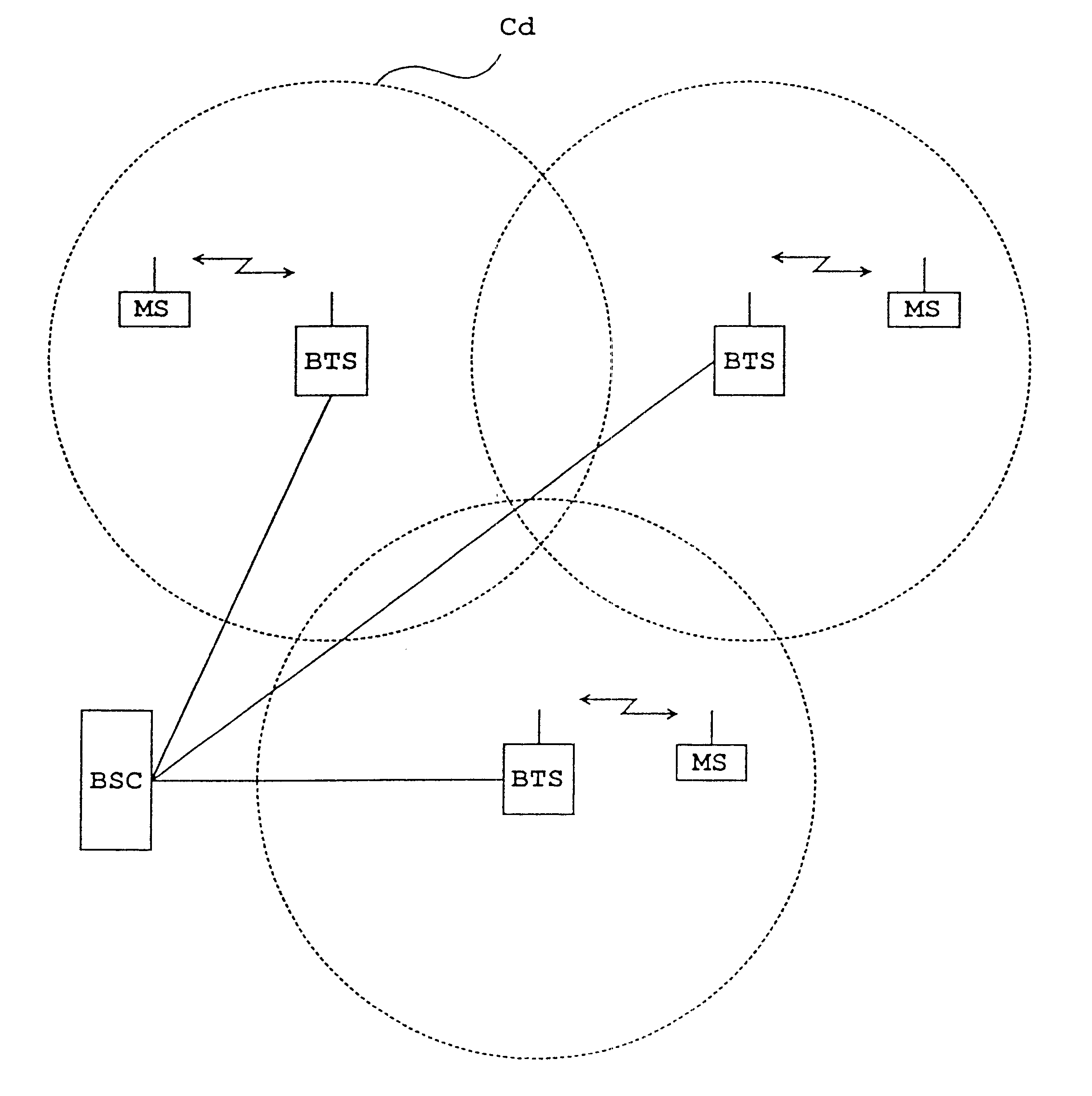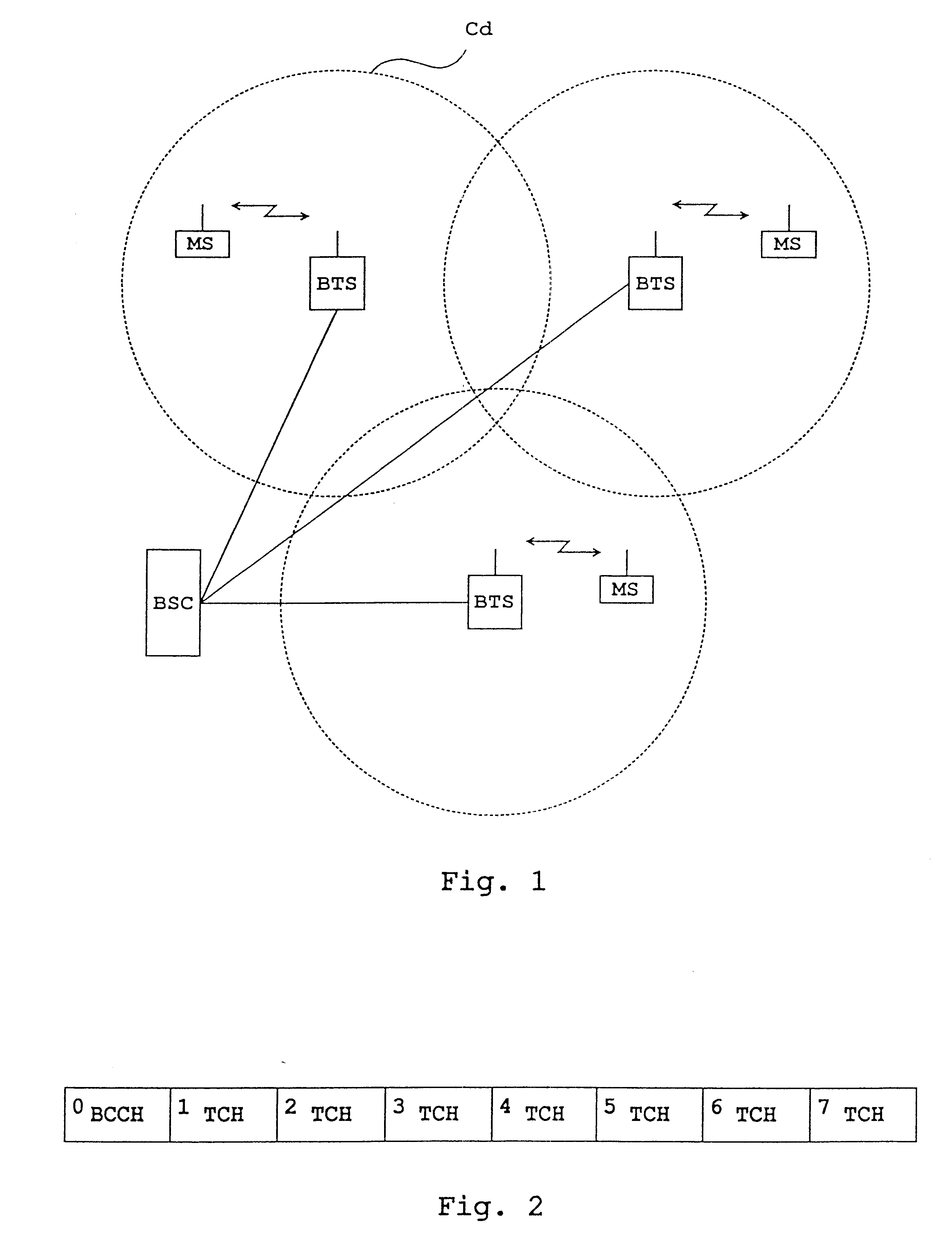Method of implementing dynamic channel allocation in a cellular radio system
- Summary
- Abstract
- Description
- Claims
- Application Information
AI Technical Summary
Benefits of technology
Problems solved by technology
Method used
Image
Examples
Embodiment Construction
FIG. 1 illustrates a cellular radio system, to which a method of the invention can be applied. A cell Cd represents a cell applying dynamic channel allocation. In a cellular radio system, each cell has at least one base station BTS, which communicates with subscriber terminals MS located within its area. A base station controller BSC, in turn, controls the operation of one or more base stations BTS. In cellular radio systems, a user's speech and data traffic between a base station and a subscriber terminal is transmitted on traffic channels. Between a base station and a subscriber terminal are also needed various control messages and system information, which are transmitted on control channels. The method of the invention can be applied to any cellular radio system utilizing an FDMA multiple access system or a time-division multiple access system TDMA. Although in the following description the method of the invention is applied to the GSM system, it is not restricted to the system....
PUM
 Login to View More
Login to View More Abstract
Description
Claims
Application Information
 Login to View More
Login to View More - R&D
- Intellectual Property
- Life Sciences
- Materials
- Tech Scout
- Unparalleled Data Quality
- Higher Quality Content
- 60% Fewer Hallucinations
Browse by: Latest US Patents, China's latest patents, Technical Efficacy Thesaurus, Application Domain, Technology Topic, Popular Technical Reports.
© 2025 PatSnap. All rights reserved.Legal|Privacy policy|Modern Slavery Act Transparency Statement|Sitemap|About US| Contact US: help@patsnap.com



